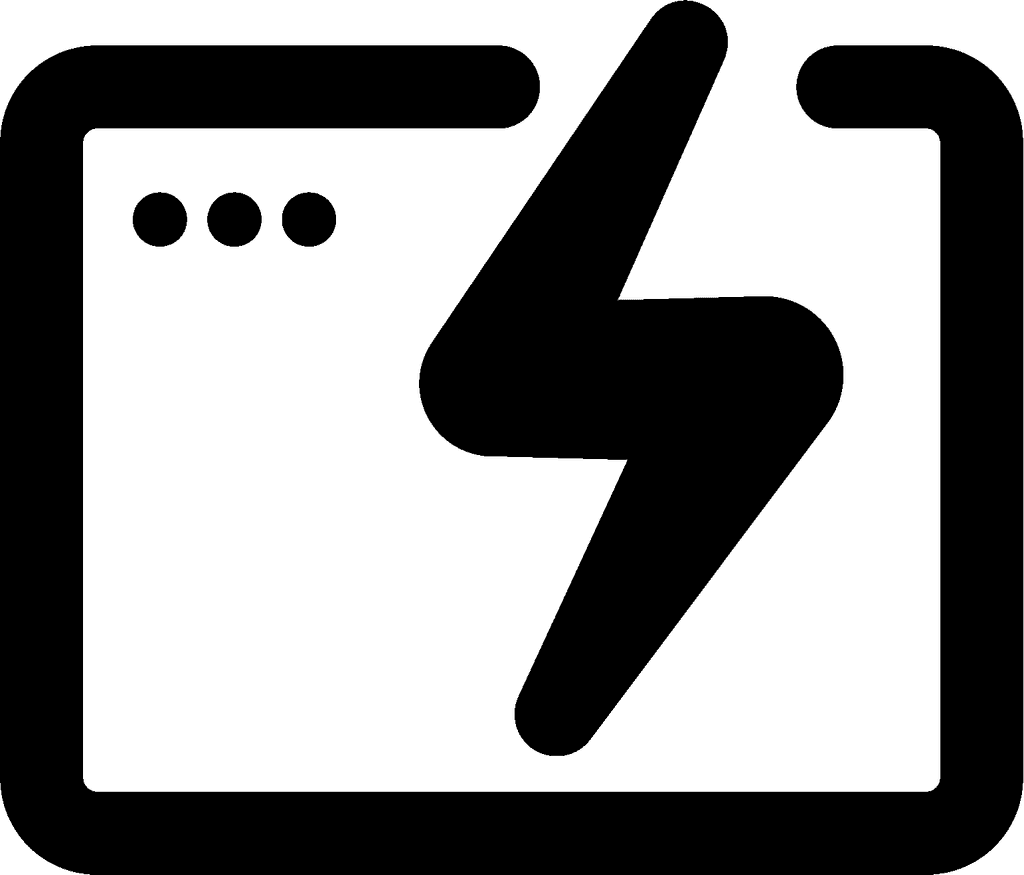AI Chatbot for Business: Boosting Customer Service Efficiency
AI chatbots are transforming how businesses interact with customers and streamline operations. These intelligent conversational agents use natural language processing and machine learning to engage users in human-like dialogue. Companies across industries are implementing AI chatbots to provide 24/7 customer support, automate routine tasks, and deliver personalized experiences at scale.
AI chatbots offer numerous benefits for businesses of all sizes. They can handle high volumes of inquiries simultaneously, reducing wait times and freeing up human agents to focus on complex issues. Advanced chatbots integrate with backend systems to access customer data and provide tailored recommendations or solutions.
The technology behind AI chatbots continues to evolve rapidly. Natural language understanding is improving, allowing chatbots to better interpret context and intent. Machine learning algorithms enable chatbots to learn from interactions and become more accurate over time. As capabilities expand, AI chatbots are poised to play an increasingly central role in business operations and customer engagement strategies.

Understanding AI Chatbots
AI chatbots leverage advanced technologies to communicate with users in natural language. They have transformed how businesses interact with customers and handle various tasks.
The Evolution of AI in Business
AI chatbots emerged from early rule-based systems. These basic programs followed predefined scripts and offered limited interactions. As technology advanced, machine learning algorithms allowed chatbots to learn from data and improve over time.
Natural language processing (NLP) enabled chatbots to understand and respond to human language more accurately. Deep learning models further enhanced their ability to interpret context and generate human-like responses.
Today's AI chatbots use sophisticated neural networks and can handle complex queries. They adapt to different industries and tasks, from customer service to sales and internal operations.
How AI Chatbots Work
AI chatbots process user input through several stages. First, they use NLP to parse and understand the text or speech. This involves breaking down sentences, identifying intent, and extracting key information.
Next, the chatbot accesses its knowledge base or external data sources to formulate a response. Advanced chatbots use machine learning algorithms to continuously refine their responses based on user interactions.
Generative AI models can create original text, allowing chatbots to produce more natural and contextually appropriate replies. These systems often employ large language models trained on vast amounts of data.
Types of AI Chatbots
Rule-based chatbots follow predetermined paths and work best for simple, repetitive tasks. They're easy to implement but lack flexibility.
AI-powered chatbots use machine learning to understand intent and context. These can handle more complex queries and improve over time.
Hybrid chatbots combine rule-based systems with AI capabilities. They offer the reliability of predefined responses with the adaptability of machine learning.
Conversational AI chatbots use advanced NLP and generative models to engage in more human-like dialogues. They can understand nuanced language and provide personalized responses.
Industry-specific chatbots are tailored for particular sectors, such as healthcare or finance. They incorporate domain knowledge to offer specialized assistance.
Integrating AI Chatbots Into Business Operations
AI chatbots offer powerful capabilities to transform key business functions. Companies can leverage these tools to improve customer interactions, drive sales, and optimize internal processes.
Boosting Customer Service
AI chatbots excel at providing fast, accurate customer support 24/7. They can handle common inquiries, process returns, and troubleshoot issues without human intervention. This reduces wait times and frees up staff for complex cases.
Chatbots integrate with CRM systems to access customer data and provide personalized assistance. They can also escalate issues to human agents when needed, ensuring a seamless support experience.
Many businesses use chatbots on their websites and messaging platforms like Facebook and WhatsApp. This allows customers to get help through their preferred channels.
Enhancing Sales and Marketing
AI chatbots serve as powerful tools for lead generation and nurturing. They engage website visitors, qualify prospects, and guide them through the sales funnel.
These bots can recommend products based on customer preferences and past purchases. They also answer product questions and facilitate transactions directly within chat interfaces.
Chatbots support marketing efforts by delivering targeted content and promotions. They collect valuable customer data to inform marketing strategies and personalize campaigns.
Streamlining Internal Workflows
AI chatbots streamline various internal business processes. They automate routine tasks like scheduling meetings, filing expense reports, and answering HR questions.
Employees can use chatbots to quickly access company information and resources. This reduces time spent searching for data and improves productivity.
Chatbots integrate with workflow management tools to assign tasks, track progress, and send reminders. They can also analyze data and generate reports, supporting data-driven decision making.
Platform and Language Support
AI chatbots for business offer versatile deployment options and multilingual capabilities. They integrate seamlessly across popular messaging platforms and support diverse communication channels.
Chatbot Platforms and Tools
Numerous platforms facilitate chatbot development and deployment. Chatfuel enables businesses to create bots for Facebook Messenger without coding. Intercom provides customer messaging tools with built-in chatbot functionality. HubSpot offers chatbots as part of its CRM suite.
Slack supports custom chatbots for team communication. Shopify integrates chatbots for e-commerce customer service. These platforms offer drag-and-drop interfaces, templates, and analytics to streamline bot creation and management.
Multi-Lingual and Omni-Channel Communication
Modern chatbots support multiple languages and operate across various channels. They can engage customers on websites, mobile apps, and messaging platforms like WhatsApp and Facebook Messenger.
Natural Language Processing (NLP) enables chatbots to understand and respond in different languages. This allows businesses to serve international customers effectively.
Omni-channel support ensures consistent conversations across platforms. A customer can start a chat on a website and continue it seamlessly on a mobile app or messaging service.
Designing a User-Centric Chatbot Experience
Creating an effective AI chatbot for business requires a thoughtful approach focused on the end user. A well-designed chatbot enhances customer interactions and streamlines business processes.
Creating Engaging UI/UX
An intuitive user interface is crucial for chatbot success. Clear, concise messaging helps users understand the chatbot's capabilities and limitations. Visual cues like buttons and menus guide users through conversations smoothly.
Chatbot responses should be prompt and relevant. Natural language processing enables the bot to interpret user intent accurately. AI-powered suggestions can anticipate user needs and offer proactive assistance.
A conversational flow that mimics human interaction keeps users engaged. The chatbot should maintain context throughout the conversation and provide coherent follow-up questions or responses.
Ensuring Accessibility and Inclusivity
Chatbots must be accessible to all users, including those with disabilities. Screen reader compatibility and keyboard navigation are essential features.
Multilingual support broadens the chatbot's reach to diverse audiences. Language detection and translation services can be integrated to facilitate communication across language barriers.
Inclusive design principles ensure the chatbot serves users of all backgrounds and abilities. This includes using clear, simple language and avoiding potentially offensive or exclusionary terms.
Customization and Branding
Businesses can tailor chatbot interfaces to align with their brand identity. Customizable color schemes, fonts, and logos create a cohesive brand experience.
Pre-built templates offer quick deployment options for common use cases. These templates can be modified to suit specific business needs and customer preferences.
Drag-and-drop interfaces allow non-technical users to design and update chatbot flows easily. This flexibility enables rapid iteration based on user feedback and changing business requirements.
Personalization features enhance the user experience. The chatbot can use customer data to provide tailored recommendations and responses, improving engagement and satisfaction.
Performance Monitoring and Optimization
AI chatbots require ongoing assessment and refinement to deliver optimal results for businesses. Regular evaluation of key metrics and user interactions enables continuous improvement of the system's capabilities and performance.
Testing and Enhancing Accuracy
Rigorous testing is crucial for maintaining chatbot accuracy. Businesses should implement A/B testing to compare different responses and identify the most effective ones. Natural language processing algorithms can be fine-tuned using machine learning techniques to improve understanding of user intent.
Periodic audits of chatbot conversations help identify areas for improvement. Analyzing misunderstood queries and incorrect responses allows developers to update the knowledge base and refine response algorithms. Regular updates to the chatbot's language models ensure it stays current with evolving terminology and customer needs.
Analyzing Engagement and Customer Interactions
Monitoring user engagement provides valuable insights into chatbot performance. Key metrics to track include:
Average conversation duration
User satisfaction ratings
Frequency of escalation to human agents
Conversation completion rates
These data points help businesses understand how well the chatbot meets customer needs. Analyzing common queries and user feedback enables companies to identify trends and adjust the chatbot's capabilities accordingly.
Response time is another critical factor. Faster, more accurate responses generally lead to higher customer satisfaction. Businesses should set benchmarks for response times and work to optimize them through technical improvements and streamlined conversation flows.
Leveraging Insights for Continuous Improvement
Data-driven insights form the foundation for ongoing chatbot optimization. Regular analysis of performance metrics and user interactions guides strategic enhancements. Businesses can use this information to:
Expand the chatbot's knowledge base
Refine conversation flows
Improve language processing capabilities
Enhance personalization features
Machine learning algorithms can be employed to automatically identify areas for improvement based on user interactions. This proactive approach helps businesses stay ahead of customer needs and expectations.
Integrating customer feedback into the improvement process is essential. Surveys and direct user input provide valuable perspectives on the chatbot's strengths and weaknesses. By acting on this feedback, businesses can create a more user-friendly and effective AI chatbot experience.
Frequently Asked Questions
AI chatbots offer numerous benefits for businesses, from improving customer service to streamlining operations. They can be integrated with existing systems to enhance efficiency and provide valuable data insights.
What are the advantages of implementing an AI chatbot in business operations?
AI chatbots provide 24/7 availability, handle multiple queries simultaneously, and reduce operational costs. They offer consistent service quality and can be easily scaled to meet growing business needs.
These intelligent assistants also free up human employees to focus on more complex tasks. This leads to improved productivity and resource allocation within the organization.
How do AI chatbots enhance customer service for businesses?
AI chatbots deliver instant responses to customer inquiries, reducing wait times and improving satisfaction. They provide personalized interactions based on customer data and preferences.
These virtual assistants can handle routine queries efficiently, allowing human agents to focus on more complex issues. This results in faster resolution times and improved overall customer experience.
Can AI chatbots be integrated with existing business systems, and if so, how?
AI chatbots can be seamlessly integrated with existing business systems through APIs and middleware solutions. They can connect with CRM platforms, inventory management systems, and databases.
This integration allows chatbots to access real-time information and provide accurate responses. It also enables them to update customer records and initiate actions within connected systems.
What criteria should be considered when choosing an AI chatbot for a business?
Key criteria include the chatbot's natural language processing capabilities, integration options, and scalability. Businesses should evaluate the chatbot's ability to handle industry-specific terminology and queries.
Security features, customization options, and analytics capabilities are also important factors. The vendor's reputation, support services, and pricing model should be carefully considered.
In what ways can AI chatbots contribute to lead generation and sales?
AI chatbots can qualify leads by asking targeted questions and collecting relevant information. They can provide product recommendations based on customer preferences and browsing history.
These virtual assistants can also schedule appointments, send follow-up messages, and nurture leads through personalized interactions. This helps businesses convert more prospects into customers.
How do businesses measure the success and effectiveness of their AI chatbots?
Key performance indicators include customer satisfaction scores, resolution rates, and average handling time. Businesses can track the number of queries handled and the accuracy of responses provided.
Conversion rates, cost savings, and ROI are important metrics for evaluating chatbot effectiveness. User engagement levels and the impact on human agent workload are also valuable indicators of success.

Build a more powerful help desk with Risotto
Minimize Tickets and Maximize Efficiency
Simplify IAM and Strengthen Security
Transform Slack into a help desk for every department
Schedule your free demo



